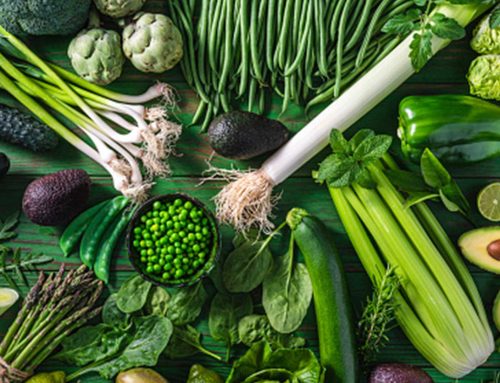Quality control is an essential part of any industry that produces goods or services. In agriculture, quality control plays a vital role in ensuring that the products we consume are safe, healthy, and of high quality. In this blog post, we will discuss the importance of quality control in the agriculture industry, the benefits it provides, and the techniques used to ensure that the food we eat is safe and nutritious.
Understanding Agriculture Quality Control
What is Agriculture Quality Control?
Agriculture quality control involves the use of techniques and practices to ensure that agricultural products meet the required standards. These standards can be related to quality, safety, and health, among other factors. Agricultural quality control aims to ensure that the products are safe to consume and meet the legal requirements.
Elements of Agriculture Quality Control
The process of agricultural quality control involves several elements that are critical to its success. These elements include:
- Product specification: Product specification involves defining the characteristics that the agricultural product should possess. These characteristics may include size, color, shape, and weight, among others.
- Sampling and analysis: Sampling and analysis is the process of collecting samples from the product and testing them to ensure that they meet the required standards. The samples are collected randomly from different parts of the product to ensure that the test results are accurate.
- Product handling and storage: Proper handling and storage of the product are critical to maintaining its quality. These practices help to minimize damage to the product, prevent contamination, and ensure that the product remains fresh for longer.
- Traceability: Traceability involves tracking the movement of the product from the farm to the consumer. This process helps to identify any potential issues that may arise during production and distribution.
Importance of Implementing Agriculture Quality Control
Implementing quality control in agriculture is essential for several reasons, including:
- Ensuring product safety: Quality control measures in agriculture help to ensure that the products are safe for human consumption. This is achieved through the use of practices that prevent contamination, minimize the use of harmful chemicals, and ensure that the products are handled and stored correctly.
- Meeting legal requirements: Quality control measures are necessary to ensure that the agricultural products meet the legal requirements set by regulatory bodies. These requirements may relate to product safety, quality, and labeling, among others.
- Meeting consumer demands: Consumers are becoming increasingly aware of the importance of food safety and quality. Implementing quality control measures in agriculture can help to meet the demands of consumers who are looking for safe and healthy products.
- Maintaining the reputation of the industry: Agriculture is a vital industry that plays a critical role in feeding the world’s population. Implementing quality control measures helps to maintain the industry’s reputation by ensuring that the products are of high quality and safe for human consumption.
Role of Agriculture Quality Control in Ensuring Food Safety
Food safety is a critical issue in the agriculture industry. The use of harmful chemicals, poor handling practices, and contamination can lead to foodborne illnesses, which can be fatal. Agriculture quality control plays a crucial role in ensuring that the products are safe for human consumption by:
- Preventing contamination: Quality control measures help to prevent contamination by ensuring that the products are grown, harvested, and processed under hygienic conditions. This includes ensuring that the workers handling the products are trained in hygiene practices and that the equipment used is regularly cleaned and sanitized.
- Minimizing the use of harmful chemicals: Quality control measures in agriculture help to minimize the use of harmful chemicals such as pesticides, herbicides, and fungicides. This is achieved through the use of integrated pest management techniques that promote the use of natural methods to control pests and diseases.
- Monitoring for foodborne illnesses: Quality control measures involve monitoring the products for potential foodborne illnesses. This involves conducting regular tests to ensure that the products are free from harmful bacteria and other pathogens that can cause illness.
Benefits of Quality Control in Agriculture
Implementing quality control measures in agriculture provides several benefits, including:
Improves Productivity
Quality control measures help to improve productivity in agriculture by reducing waste and increasing efficiency. By ensuring that the products meet the required standards, the industry can minimize losses resulting from rejected products, customer complaints, and recalls. This helps to improve the industry’s profitability by reducing costs and increasing productivity.
Enhances Product Quality
Quality control measures help to enhance the quality of the products by ensuring that they meet the required standards. This helps to improve the products’ taste, texture, appearance, and nutritional value, making them more attractive to consumers. By enhancing product quality, the industry can attract new customers and retain existing ones, leading to increased sales and profits.
Increases Customer Satisfaction
Implementing quality control measures in agriculture helps to increase customer satisfaction by ensuring that the products are safe, healthy, and of high quality. This leads to increased trust in the industry, which can translate into increased sales and customer loyalty.
Reduces Food Wastage
Quality control measures help to reduce food wastage by ensuring that the products are of high quality and safe for consumption. This helps to minimize losses resulting from rejected products, customer complaints, and recalls, reducing the amount of food that goes to waste.
Quality Control Techniques in Agriculture
There are several quality control techniques used in agriculture, including:
Good Agricultural Practices (GAP)
Good agricultural practices (GAP) involve implementing practices that promote the safety and quality of agricultural products. This includes using safe and effective agricultural inputs, implementing proper crop and animal management practices, and ensuring that the products are handled and stored correctly.
Hazard Analysis and Critical Control Points (HACCP)
Hazard analysis and critical control points (HACCP) is a systematic approach to identifying potential hazards in the food production process and implementing measures to control them. This involves identifying the critical control points in the production process and implementing measures to ensure that they are controlled effectively.
Quality Assurance (QA) and Quality Control (QC)
Quality assurance (QA) and quality control (QC) are two techniques used to ensure that the products meet the required standards. QA involves implementing systems and processes to ensure that the products meet the required standards, while QC involves testing the products to ensure that they meet the required standards.
Challenges of Implementing Quality Control in Agriculture
Implementing quality control measures in agriculture can be challenging, and some of the main challenges include:
High Costs
Implementing quality control measures can be expensive, especially for small-scale farmers. The costs associated with implementing these measures can include training, equipment, and certification costs.
Resistance to Change
Implementing quality control measures may require farmers to change their traditional farming practices, which can be challenging. Farmers may resist these changes, making it difficult to implement quality control measures effectively.
Lack of Adequate Training
Effective implementation of quality control measures requires adequate training of farmers and other stakeholders. However, many farmers may lack the necessary training and knowledge to implement these measures effectively.
Conclusion
In conclusion, quality control is a critical aspect of the agriculture industry that plays a vital role in ensuring that the products we consume are safe, healthy, and of high quality. Implementing quality control measures in agriculture provides several benefits, including improving productivity, enhancing product quality, increasing customer satisfaction, and reducing food wastage. While there are challenges associated with implementing quality control measures in agriculture, it is essential to overcome them to ensure that the industry continues to provide safe and healthy products to consumers. By implementing effective quality control measures, the agriculture industry can improve its reputation, attract new customers






